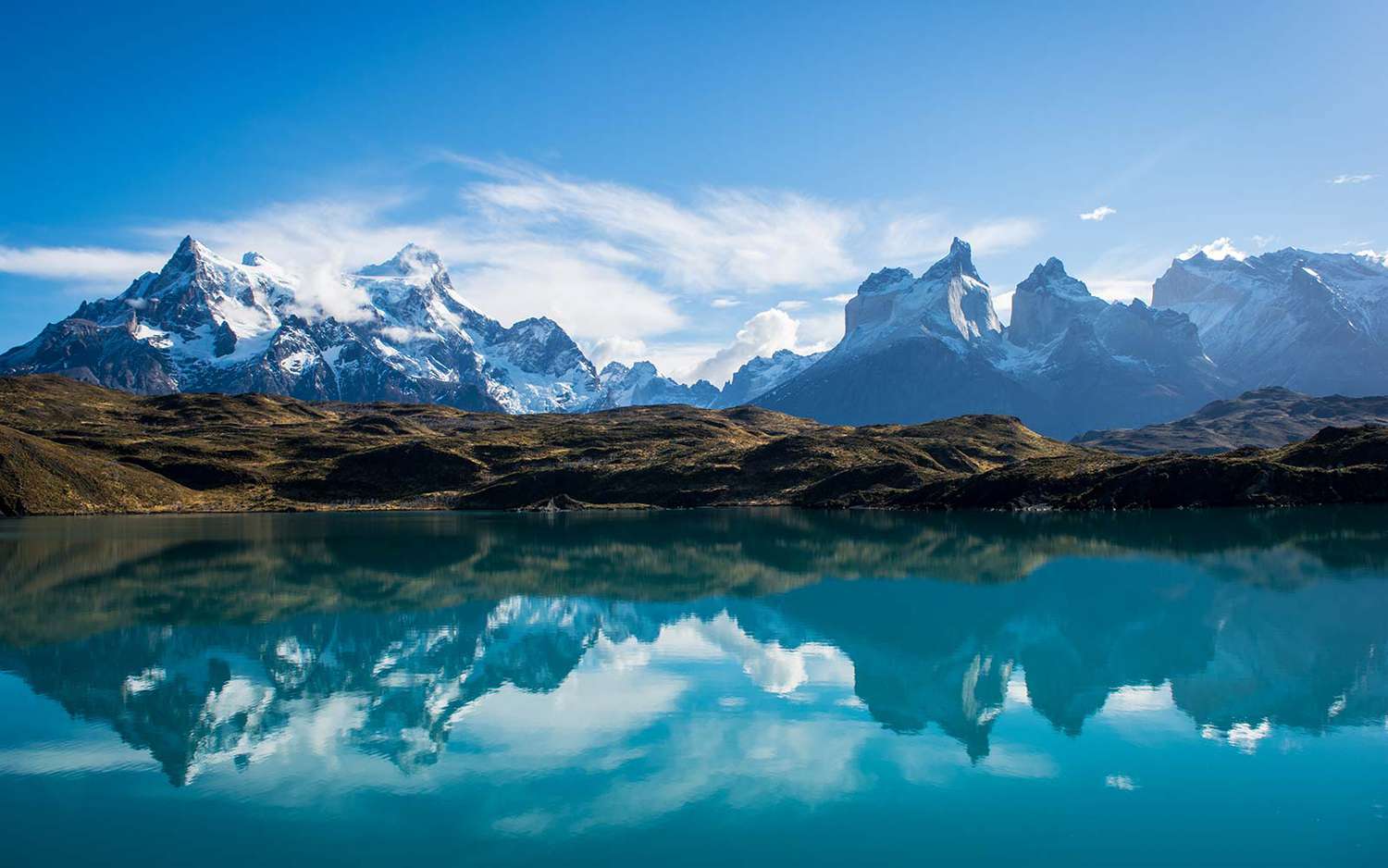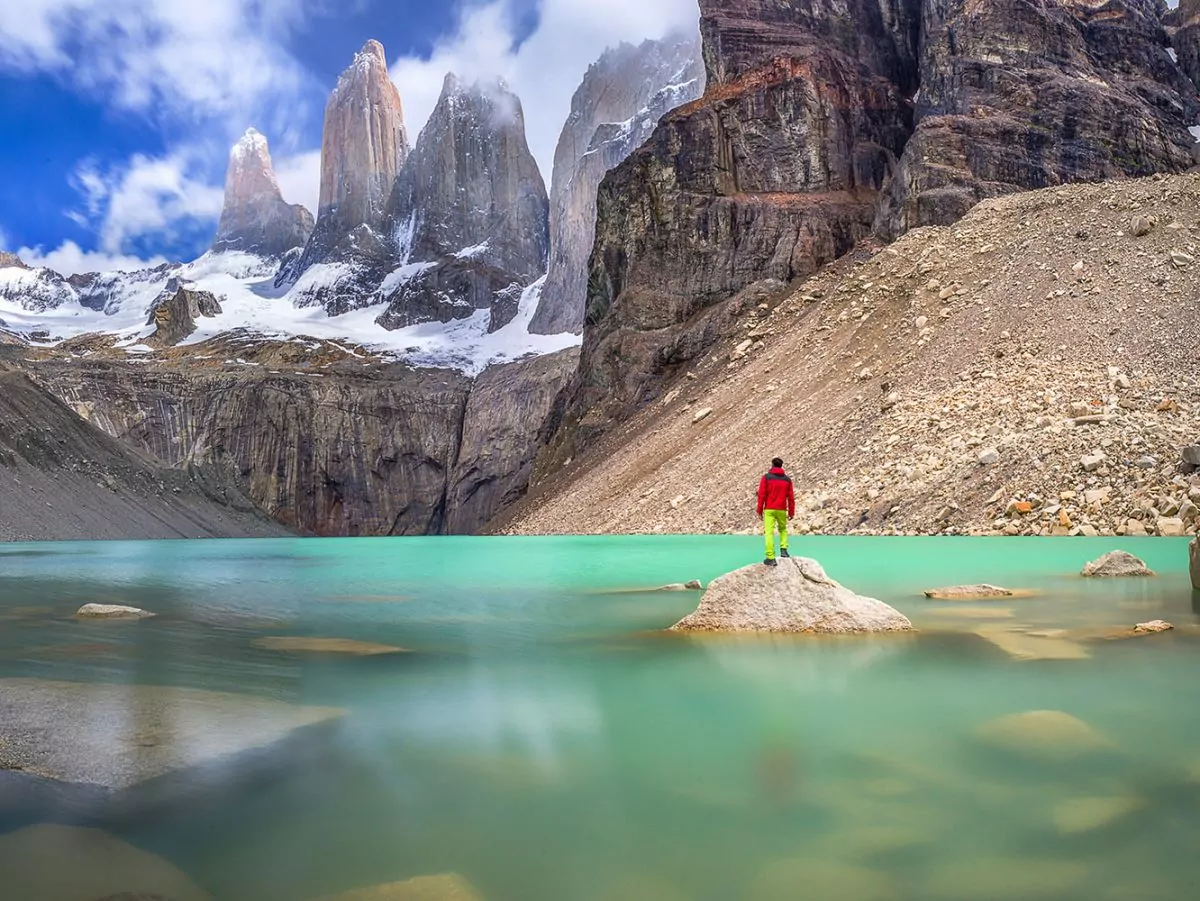



Patagonia National Park is one of Chile’s most breathtaking and ecologically significant protected areas, located in the Aysén region of southern Chilean Patagonia. Established in 2018, the park spans over 752,000 acres and was formed through a landmark partnership between the Chilean government and the Tompkins Conservation Foundation, led by Doug and Kris Tompkins (founders of North Face and Patagonia brands).
The park is a symbol of large-scale rewilding and conservation, created from former sheep ranches that were returned to nature. Its landscapes range from glacial valleys, turquoise rivers, and snow-capped mountains to expansive grasslands and lush forests. The area is also rich in biodiversity and is home to endangered species such as the South Andean deer (huemul), pumas, and hundreds of bird species including Andean condors.
Patagonia National Park stands out not only for its pristine beauty but also for being a model of sustainable tourism and conservation, aiming to restore and protect Chilean Patagonia’s natural heritage for future generations.
Summer (December to February): The best time to visit Patagonia National Park is during the Southern Hemisphere summer, as the weather is milder, with temperatures ranging from 10°C to 20°C (50°F to 68°F). This is ideal for hiking, camping, and wildlife viewing, as the trails are more accessible and the days are longer.
Autumn (March to May): Autumn brings cooler temperatures and a colorful display of fall foliage. This is a quieter time to visit, with fewer tourists, but the weather can be unpredictable. Make sure to prepare for possible rain and wind.
Winter (June to August): Winter offers a more challenging environment, with cold temperatures and snow in higher altitudes. While many trails may be closed, winter sports enthusiasts will appreciate the season’s snow-covered landscape. Some services may be limited during this time.
Spring (September to November): Spring is a wonderful time to visit, as flowers start to bloom and the weather is still cool but more stable. However, early spring can still feel quite wintry, so it’s essential to pack appropriately for fluctuating conditions.
By Air: The closest major airport is in Coihaique (Balmaceda Airport), which is approximately a 5-hour drive from Patagonia National Park. From Coihaique, you can rent a car or take a bus to the park.
By Car: If you’re driving, the park is accessible by Ruta 7 (Carretera Austral), a scenic highway that cuts through the Chilean Patagonia region. The park is about 200 km (124 miles) from the nearest town of Coihaique.
By Bus: There are bus services from Coihaique to the park, but they are infrequent, so it’s best to check schedules in advance.
By Boat: While not the most common route, some travelers opt to take ferries to coastal towns and then drive inland to the park. However, the bus and car routes are generally more straightforward.
Tamango National Reserve: A part of Patagonia National Park, this area is known for its rugged landscapes, wildlife, and the Baker River. It’s a great location for hiking and wildlife viewing, including huemul deer and condors.
Lake General Carrera: This massive glacial lake is shared by Chile and Argentina and is one of the most scenic spots in Patagonia. It offers opportunities for kayaking, fishing, and boat tours, along with views of towering snow-capped mountains.
Pumas and Wildlife Viewing: Patagonia National Park is one of the best places in the world to spot pumas in the wild. The park is also home to guanacos, Andean condors, and huemul deer, making it a great destination for wildlife enthusiasts.
Laguna Verde: A stunning green lagoon surrounded by dramatic mountains, Laguna Verde is one of the park's most picturesque spots. It’s a great place for photography and peaceful reflection.
Baker River: Known for its turquoise waters and the surrounding landscapes, the Baker River is a key feature of the park. It’s popular for rafting, fishing, and hiking along its banks.
Chilean Patagonia's Glaciers: Though not directly within the park, the surrounding region of Southern Patagonia is home to stunning glaciers, including Campo de Hielo Sur, one of the largest ice fields in the world.
Hiking and Trekking: Patagonia National Park offers a range of hiking trails for all levels. Some popular hikes include the Laguna Azul Trail, which offers breathtaking views of the lake and surrounding mountains, and the Puma Trail, which leads to stunning views of the Baker River and the Southern Ice Field.
Wildlife Watching: The park is a sanctuary for several endangered species, including the huemul (Andean deer) and the puma. Visitors can explore the park with guides to learn more about these elusive animals.
Fishing: Patagonia is famous for its fly-fishing opportunities. The Baker River and Lake General Carrera offer some of the best freshwater fishing in Chile, with species such as trout and salmon.
Rafting and Kayaking: The Baker River is known for its fast-flowing waters, making it a popular spot for rafting and kayaking. There are options for beginners and experienced adventurers.
Camping: For those who want to experience Patagonia’s wilderness up close, the park offers several campsites. You can camp in the park itself or in nearby areas, surrounded by incredible landscapes.
Luxury: The Awasi Patagonia lodge offers luxury accommodations with an all-inclusive experience, including guided excursions and meals. It’s a great choice for those who want a more comfortable stay in the heart of Patagonia.
Mid-Range: There are several mid-range lodges and cabins near the park, such as Hotel El Mirador in Coihaique or Puma Lodge, which offers a unique experience with views of the nearby mountains and forests.
Camping: For a more rustic experience, the park offers campsites such as Camping Laguna Verde, where you can sleep under the stars and enjoy the natural surroundings.
Eco-Lodges: For an eco-friendly stay, some lodges like EcoCamp Patagonia provide sustainable accommodations while immersing visitors in the wilderness.
Patagonian Cuisine: Traditional dishes like cordero al palo (roast lamb) are popular in Patagonia. Lamb is cooked on an open fire and served with potatoes or vegetables. You can find this dish at many local restaurants and lodges.
Seafood: Given the proximity to the coast, Patagonia offers excellent seafood, including king crab, sea bass, and mussels. Many restaurants, especially in Coihaique, serve fresh seafood dishes.
Chilean Wines: Chile is known for its wine, and Patagonia is no exception. Local vineyards in the region offer tastings of high-quality red and white wines.
Traditional Patagonian Barbecue: Many guesthouses and eco-lodges will offer traditional asado (barbecue), where meats are slow-cooked on an open flame, often accompanied by bread and wine.
Indigenous Heritage: Patagonia is home to indigenous groups, including the Mapuche and Tehuelche peoples. Their cultural traditions, including their connection to the land and its natural resources, are integral to the region’s identity.
Patagonian Traditions: The people of Patagonia have a rich tradition of sheep herding, farming, and fishing, and many of these practices are still followed today. Visitors can learn about these traditions through cultural tours or visits to local estancias (ranches).
Folk Music and Dance: Folk music is a significant part of Patagonian culture, with traditional Chilean instruments like the charango (a small string instrument) and the quena (a type of flute) frequently used in local performances.